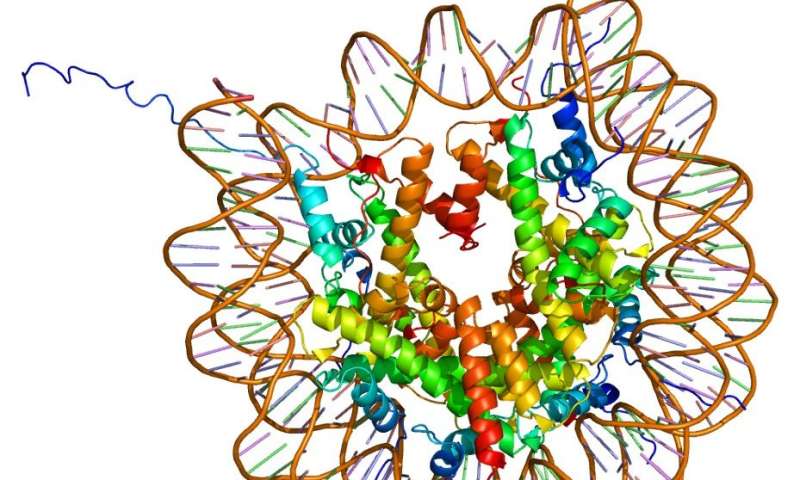Energetic gene switch

Histones are proteins that regulate the unwinding of DNA in the cell nucleus and the expression of genes based on chemical modifications or "marks" that are placed on their tails. Understanding how the histone "code" regulates gene expression is important for understanding disease.
Reporting in Proceedings of the National Academy of Sciences, James Galligan, Ph.D., Lawrence Marnett, Ph.D., and colleagues demonstrate the existence of a previously undetected histone modification derived from glycolysis, the breaking down of glucose in the liquid part of the cell without oxygen to produce energy. Histone modifications by the glycolytic side-product methyglyoxal (MGO) can significantly alter the expression of numerous genes.
MGO concentrations are elevated in cancer, cardiovascular disease, diabetes and renal disease, particularly in cells lacking glyoxalase 1, the major enzyme responsible for detoxifying MGO. The researchers found that another enzyme, deglycase (DJ-1), can protect histones from MGO modification.
These findings provide a mechanism linking flux through glycolysis with transcription and gene expression via histone modification.
More information: James J. Galligan et al. Methylglyoxal-derived posttranslational arginine modifications are abundant histone marks, Proceedings of the National Academy of Sciences (2018). DOI: 10.1073/pnas.1802901115
Journal information: Proceedings of the National Academy of Sciences
Provided by Vanderbilt University




















